The Marvelous Microbiome Of Shipwrecks
17:03 minutes
Off the coast of North Carolina is a large lagoon called the Pamlico Sound, which supports a diverse ecological landscape. It’s also home to the Pappy’s Lane Shipwreck, a World War II vessel that’s partially submerged in the Sound. This wreck has become an artificial reef, and the life that surrounds it, big and small, is ripe for research.
Just as humans have their own microbiomes, which are different for everyone, shipwrecks have microbiomes, too. Scientists study them to better understand what’s living on these sunken ships, and how to preserve them for future generations.
While the vessel is not a natural part of the Sound, its role as an artificial reef makes it an important part of the ecosystem. By better understanding its microbes, scientists hope to help preserve this non-renewable cultural artifact.
Joining Ira to talk about the marvelous microbes on the Pappy’s Lane Shipwreck is Erin Field, assistant professor of biology at East Carolina University in Greenville, North Carolina.
Explore the lagoon and the shipwreck site alongside the researchers in the photos below!
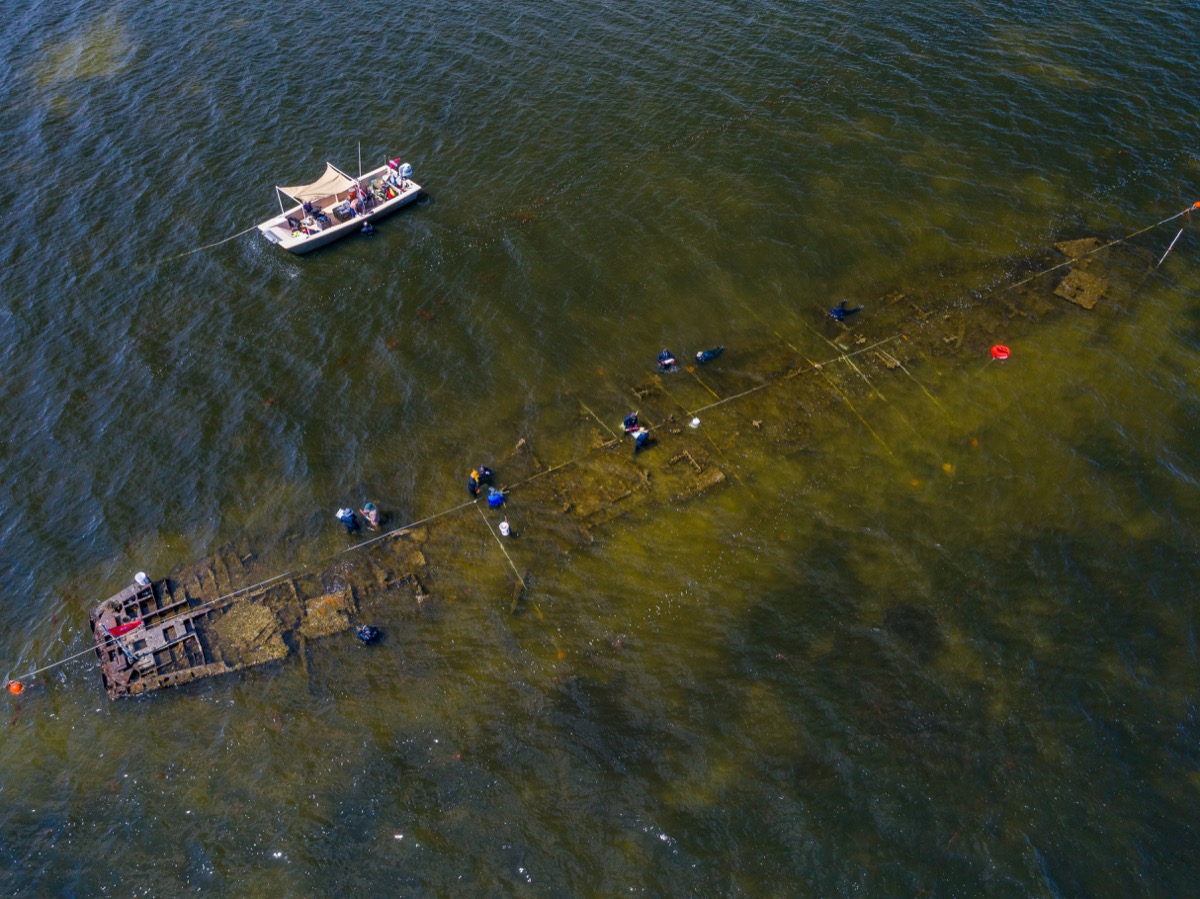
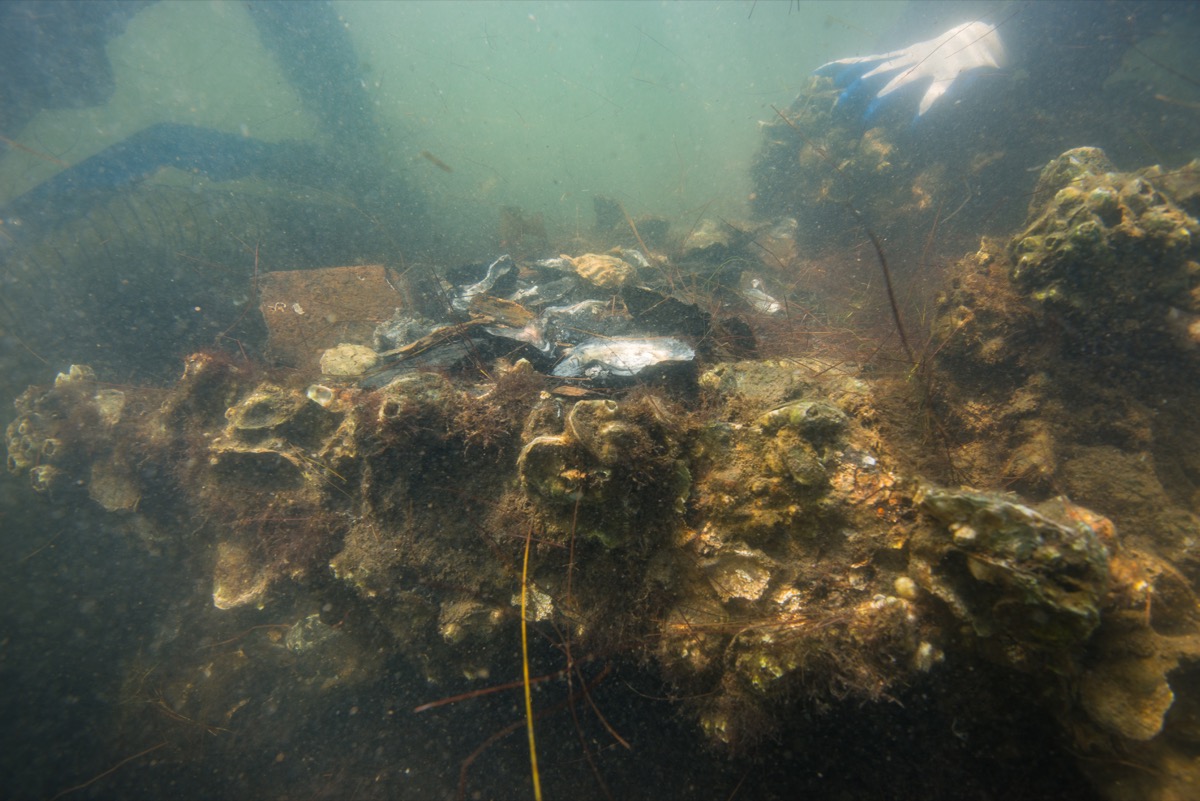
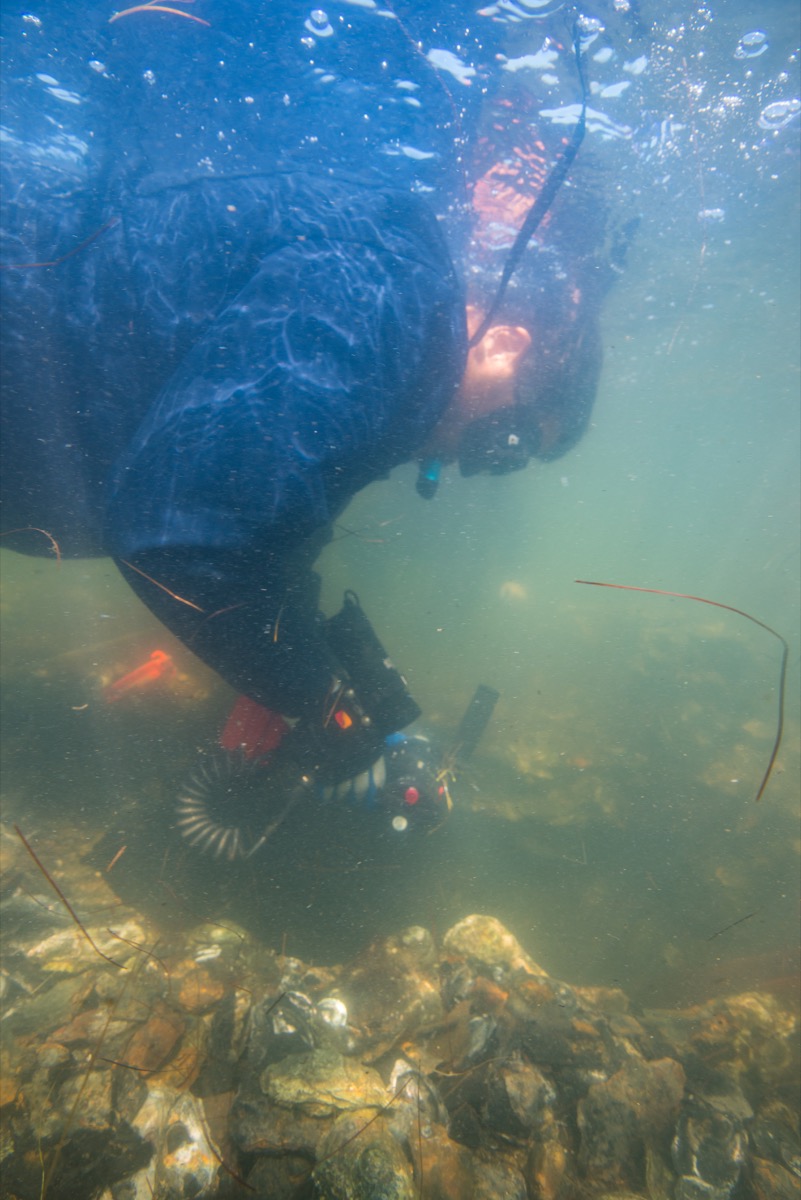
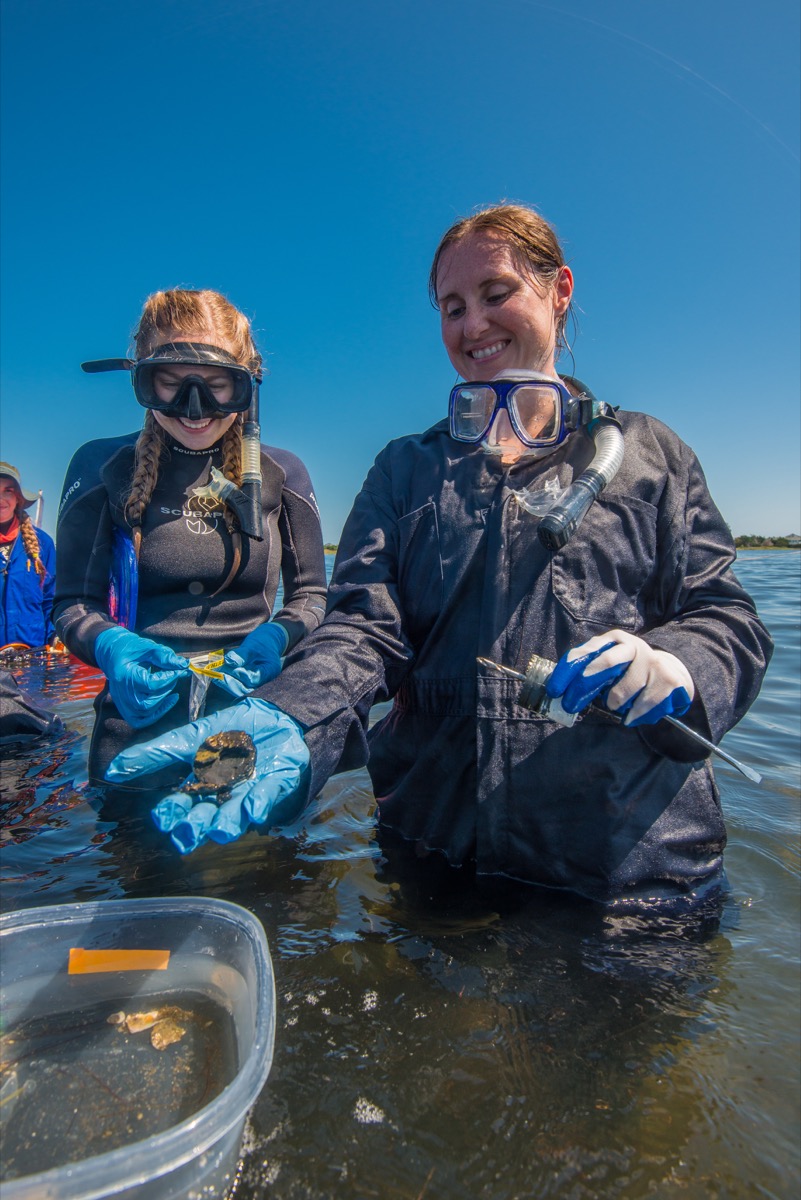
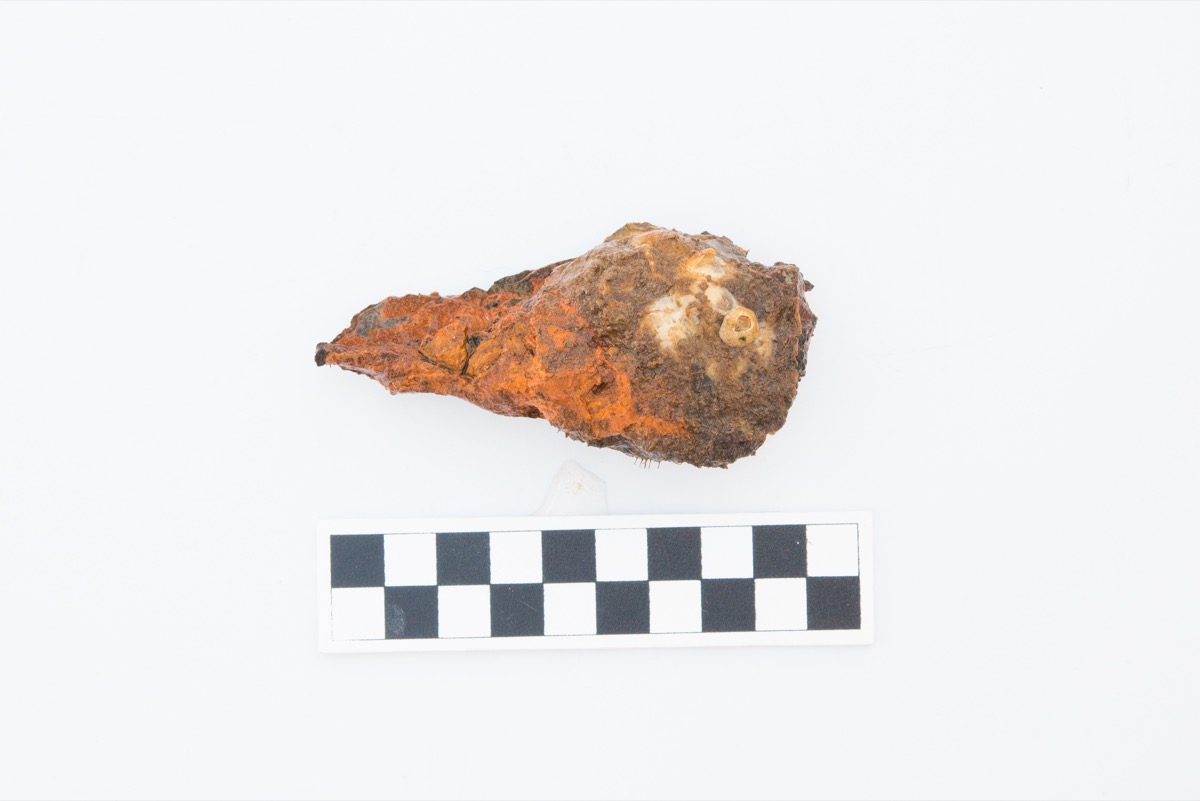
Keep an eye on Science Friday’s livestream events page and social media for more opportunities to join Ira’s next live Zoom interview, and be part of our show!
Invest in quality science journalism by making a donation to Science Friday.
Erin Field is an assistant professor of Biology at East Carolina University in Greenville, North Carolina.
IRA FLATOW: This is Science Friday, I’m Ira Flatow. Let’s take a trip, shall we?
[SPLASHING]
We’re plunging into the Pamlico Sound, a large lagoon off the coast of North Carolina. We’re not here to look at fish or plant life. We’re here to check out a shipwreck, specifically, to learn about the microbes that live on and around this wreck. You see, just like you and I have our own microbiomes, which are different for everyone, shipwrecks have microbiomes too. And scientists study them to better understand what’s living on these sunken ships and how to preserve them for future generations.
We’re looking for a shipwreck known locally as the Pappy’s Lane wreck. Yeah, ah! There it is. There it is, along with our guest, Dr. Aaron Field, assistant professor of biology at East Carolina University in Greenville, North Carolina, who is here to tell us all about the marvelous microbes that live on our shipwrecks. Welcome to Science Friday.
ERIN FIELD: Thanks for having me.
IRA FLATOW: Nice to have you. And just a note, this segment is being recorded with a live Zoom audience.
AUDIENCE: Yay!
[CLAPPING]
IRA FLATOW: Thank you, thank you, thank you. Great to see all of you. Science Friday listeners can ask their own questions about shipwreck microbes. Learn more about joining a future live recording at sciencefriday.com/livestream. Hope you enjoyed our radio theater swim, Dr. Field.
ERIN FIELD: Yeah, I’m really excited, excited to talk about the shipwreck microbes and hear everyone’s questions.
IRA FLATOW: So you’ve swum out to this a shipwreck before, I imagine.
ERIN FIELD: I have, yes. It’s a wonderful wreck in North Carolina, as you mentioned, the Pamlico Sound. And so the ship itself is about 50 meters long. It’s steel-hulled, so it’s basically made of steel and iron. And that was originally thought to be a World War II war boat built in the 1940s. It then transitioned to a life as a barge and it ran aground in the ’60s and it was abandoned there. So now it is just this staple in the community in Rodanthe.
IRA FLATOW: And it’s not in very deep water, as you can sort of wade out to it, can’t you?
ERIN FIELD: Correct. So it’s a shallow water shipwreck. So you can wade out to it. If you go out there, you will find people kayaking around there. You’ll find fish. You’ll find snorkelers. It’s– yeah, it’s a good location to go.
IRA FLATOW: Let’s talk about the microbiome that’s on the ship. How do you actually collect microbial samples from a ship?
ERIN FIELD: Yeah, so what we did was we went out to the ship itself and we were able to collect a few different sample types. So first, there are what we call shipwreck debris pieces. So these are pieces of the wreck that have already deteriorated and fallen off the intact part. And so we can collect those, and then we can scrape off the surface gently and collect the microbes that are on that.
We were also able to drill pieces from the ship hull itself, both where it’s submerged in water but not buried, and we also were able to collect drilled shipwreck pieces below the sediment line where it had just dredged. So we have a few different pieces that we collected, as well as sediment samples in the area around the wreck and the water as well.
IRA FLATOW: Are the microbes different wherever you drill or scrape? Are they different kinds of microbes, or are they all the same?
ERIN FIELD: Yeah, so that was one of the questions we really wanted to answer when we were looking at this wreck. So when you think about each shipwreck, every one is unique. Every one has its own story. It went down at different times. It was built in different places. It’s in its own environment now. But even within one shipwreck site, we can see that there are differences. So the microbiome would be one example. So the microbes in the sediment nearby versus the water nearby versus the shipwreck itself were all different. And really cool was if you look at the shipwreck itself, there were different microbes in different places on the wreck.
So much like you think about your own microbiome, you have microbes everywhere. But the ones in your gut are different than the ones on your skin. The same thing happens on these shipwrecks.
IRA FLATOW: Interesting. So what do you hope to do with this better understanding of what microbes are on the shipwrecks?
ERIN FIELD: Shipwrecks are fascinating. And the microbes can both be helpful and hurt the shipwreck environment. So when we look at microbes associated with these wrecks, some can contribute to what we call bio-corrosion. So they will help deteriorate. So organisms such as iron oxidizing bacteria or bacteria that eat iron and make rust, that can actually cause deterioration of these wrecks. And we’re trying to preserve these historical artifacts. So we want them to be maintained and preserved, so we want to control the growth of microbes that could cause damage. So we would like better early detection methods to know if they’re there so that we can better design our mitigation methods for preservation.
But we also want to maybe promote the growth bacteria that can help preserve these wrecks. So there’s also microbes that will make a biofilm. They’ll attach and make this kind of protective layer that helps protect the wreck from corrosion by the ocean itself.
IRA FLATOW: What could a preservation technique look like? I mean, how do you preserve a ship sitting there in shallow water?
ERIN FIELD: Yeah, that’s a great question. And that’s something we’re really still working on. I mean, we haven’t thought too much about how microbes really contribute to the deterioration. We have not been able to look at that enough. So I work with maritime archaeologists that are really excited about learning how they play this role so that we can design management strategies. Because like you said, it’s a huge ship at the bottom of the ocean. So how do we protect it? And so that’s something we’re working on.
IRA FLATOW: We are on Zoom live, Zoom audio. And we have a question from Ken from Bloomfield Hills, Michigan. Go ahead, Ken.
KEN: Well, good morning. I was curious as to what depths will you find microbes on shipwrecks?
IRA FLATOW: Good question.
ERIN FIELD: Yeah, it’s a great question, Ken. We look at water depth. There are microbes just about everywhere. So when a ship goes down, whether it’s shallow water like we’re looking at in Rodanthe, or it’s really deep, say, in the Gulf of Mexico or somewhere else, there will be microbes there. They are found in the water. They’re in the sediments. And when that ship goes down, it becomes a new source of space, a place to live. All these microbes are competing for space and nutrients. So they’ve just found a new place that they could live. And then they will attach and start building their own community.
IRA FLATOW: Is this a new concept about collecting a ship’s microbiome? Because I don’t remember hearing about this many years ago. Does this mean the location of a wreck impacts what microbes are on it? I mean, just learning all about this seems kind of new.
ERIN FIELD: Yeah, it is new. So the maritime archaeologists here at East Carolina University have been studying wrecks for many, many years. And they know that microbes can contribute to some of these processes. But it’s never really been evaluated. You know, it’s difficult to sample. But yeah, it’s a new area that we’re really trying to expand into.
IRA FLATOW: When we say microbes or you say microbes, does it mean a lot of different kinds of microbes? I mean, bacteria, viruses. What makes up a microbiome?
ERIN FIELD: Yeah, that’s great. Yes, is the short answer to that. And so we have bacteria. We’ll have archaea. We’ll have viruses. Basically, when we say microbe, I teach my students the simplest term, really, is anything you can’t see by the naked eye, so all those organisms that you can’t see without a microscope.
IRA FLATOW: And so these microbes are coming in contact with other aquatic life that lives in the ocean there, right?
ERIN FIELD: Yeah, they absolutely are. And so one of the things I think is so fascinating about shipwrecked microbes is a ship will go down and the microbes will be the first to attach, most likely. They have a new home that they can take advantage of. They start building a community, contributing to carbon cycling and nitrogen cycling and aiding the entire biological community in the ocean. And then as they do that, this becomes an artificial reef. And so now other organisms can come in. We have the fish and turtles and corals and oysters that all come in and make a community. So these wrecks don’t just have a historical relevance, but really, they also have a really important ecological role.
IRA FLATOW: Interesting. Let’s go to Zoom again for a question from listener, Abby, about different kinds of wrecks. Go ahead, Abby.
ABBY: Hi, Dr. Field. Have you noticed any differences in microbiomes at wrecks that are easily accessible by people versus those that are not? And if so, what do people introduce to the microbiome of those shipwreck?
IRA FLATOW: Great question.
ERIN FIELD: Yeah, that is a great question. You know, we haven’t had the opportunity to compare the microbes associated with one wreck versus another yet. That’s something we really want to do more of because it is such a newer, younger field. But I would absolutely expect that the microbes will be different. If the microbes on one ship are different in different places, I would expect that microbes between different wrecks or different depths would absolutely be different. So we have microbes that live everywhere, but it doesn’t mean that the same microbes live everywhere. And so that’s a really important thing to keep in mind.
IRA FLATOW: Do you think that you are leaving a little bit of your microbiome behind when you go to that shipwreck?
ERIN FIELD: Yeah, that’s a great question. So we really work hard to wear gloves and protect. It’s interesting, because we’re protecting a wreck from us because we have microbiome. And we don’t want it to affect our samples. But absolutely, I mean, if you go to a shipwreck and you’re scuba diving and you’re exploring or you’re snorkeling and you touch it and you do things, absolutely. You can introduce a new microbiome to that wreck. And it’s something that we haven’t had a chance to look at, but absolutely.
IRA FLATOW: You know, studying the microbes on a shipwreck is not something you see in a catalogue of a University when you go to apply to go to school there. What got you interested in studying shipwrecks?
ERIN FIELD: Well, the first thing is shipwrecks are just so cool. If you have the opportunity, you can’t say no. For me, personally, being in North Carolina, we have thousands of shipwrecks across the coast. And so you have that connection to it already. And I have been studying iron oxidizing bacteria for many years now. And these are microbes that live on steel and iron-based sources. So I thought, why wouldn’t they be on a steel hulled shipwreck in the ocean? You know, these organisms live in the ocean as well. So that was one of the things that got me really excited about it.
And then I had the opportunity to work with Nathan Richards here ECU in the Maritime Archaeology Program. And he was also very excited to learn about how microbes may be contributing to bio-corrosion or deterioration of these wrecks. So we teamed up and got started.
IRA FLATOW: We have a question from your neighborhood. Listener Terry from North Carolina’s outer banks is waiting with a question. Hi. Go ahead, Terry.
TERRY: Hi. Thanks for taking my question. My question is about the salinity, because I know the Pamlico, the salinity is variable. And I was wondering if that salinity played a big role in the difference in the microbiomes from the wreck to the sediments to the water.
ERIN FIELD: That’s an excellent question, and absolutely. Salinity plays a very large role. It does for microbes in general. Microbes usually have a range that they can live in when it comes to salinity. And you’re right. This one fluctuates in the Pamlico Sound. And so I would expect that it would affect which microbes are there. We find that a mix of microbes that you could find typically in estuaries, but that can adapt and withstand salinity ranges that do fluctuate.
I would also– back to the question that was asked earlier, when you think about the deep Navy wrecks versus here, salinity would play a role too. So if salinity and oxygen and other things are fluctuating in this estuary, it will affect which microbes are there and how they function compared to a deep wreck, that maybe some of those conditions are more constant.
IRA FLATOW: Yeah. And again, let’s talk about a deep wreck for a second. Because if– I guess if a wreck goes deep enough down into the water, you get it to an anaerobic, a lack of oxygen, right? You must find anaerobic bacteria are totally different kinds of bacteria living on those wrecks, I would imagine.
ERIN FIELD: Yeah, absolutely. So if we have a more anoxic environment, then we will have the microbes that can grow without oxygen. We also can find that you can have these– what we call micro-niches. So we can have microbes that are living together where maybe we don’t measure the oxygen, but somebody is able to produce a little bit that the others can use. But in general, the anaerobic bacteria would be expected in maybe some of those deeper sites, particularly in the sediment.
IRA FLATOW: I’m Ira Flatow. This is Science Friday from WNYC Studios. We’re talking with Erin Field, assistant professor of biology at East Carolina University in Greenville, North Carolina. And she loves to go study sunken ships, looking at the microbiomes there. I think it’s kind of fascinating. Is this– the ship that you’re studying, is it in danger– I mean, of being washed away or hurricanes that come through there?
ERIN FIELD: Absolutely. So these shipwrecks, they went down for a reason. And that environment is very tumultuous and is always changing. So it has been there since the ’60s, so we know it has withstood some storms. But a lot of things are missing still from it, whether it’s deteriorated over time. So that’s why they don’t have an exact identification on the wreck. It’s one of the reasons.
But yeah, absolutely. With stronger hurricanes coming through and storms, we could see issues with it long-term.
IRA FLATOW: You know, North Carolina’s outer banks where this wreck is known as the graveyard of the Atlantic. So I imagine that you have a lot of ships that you could search for or do your research on.
ERIN FIELD: Absolutely. So that is one advantage to being here in North Carolina. There are thousands of wrecks that have gone down off the coast North Carolina, which is why it’s gotten that name, the graveyard of the Atlantic. It is a very current-heavy constantly changing sediment environment. So it’s really dangerous for these wrecks. And the storms that come through, the really strong hurricanes, I’ve been through pretty much one a year since I moved here. And so that has always been interesting.
IRA FLATOW: Now I understand Pappy’s Lane is now like an artificial reef where coral and things are growing among the wreck there?
ERIN FIELD: Yeah, it really is an artificial reef. So one of the fun things about going to this site to sample is you’re snorkeling around, you’re sampling. There are fish everywhere. In fact, sometimes, they come up and nibble on you to see if you taste good while you’re there. And I saw so many fish. There’s oysters that have started to attach in areas, so we try to avoid that part. But there’s a great source for them to attach and live. And so yeah, it’s become quite an ecological anchor and kind of hold spot for them.
IRA FLATOW: So that’s the natural evolution, then, I would imagine, of a shipwreck. It becomes a wreck. It becomes maybe hazardous to navigation. It decays and then turns into an artificial reef.
ERIN FIELD: Yeah, absolutely. And to me, that’s one of the coolest things too about this wreck is, I think of it as a microbiologist, that these ships go down. And they have microbes already on them when they go down. But then they become a new home for all the microbes that live in the sediment in the water. And then they start this whole new ecological niche and location for fish to come in and the oysters to come in. And it’s just a wonderful thing.
IRA FLATOW: All right, so tell me what you don’t know when what you would like to find out. If you had– if I had a blank check right here in my back pocket– I wish I did– and I could give it to you, how would you spend it? What kinds of research, what kind of technology would you need?
ERIN FIELD: Yeah, so honestly, some of the big questions I have are how different or similar are the microbiomes between these wrecks all over? We really have just scratched the surface on that. So if we want to design better strategies for preservation, we really need to understand that more. I also really want to look at can we identify the microbes that are kind of early indicators for issues for potential deterioration? So I really would like to design some sort of method that can help us with early detection. Just like with us if we get sick, early detection is key. I think the shipwrecks are exactly the same way.
IRA FLATOW: Dr. Field, we have run out of time, unfortunately. I want to thank you for taking time to be with us today.
ERIN FIELD: Thank you for having me. I had a really great time talking to everybody.
IRA FLATOW: It was great. Dr. Erin Field, assistant professor of biology at East Carolina University in Greenville, North Carolina. And I want to thank all of you out there on our live Zoom audience. If you would like to join a future live Sci-Fri Zoom recording, this is how you do it. Join in at sciencefriday.com/livestream.
Copyright © 2020 Science Friday Initiative. All rights reserved. Science Friday transcripts are produced on a tight deadline by 3Play Media. Fidelity to the original aired/published audio or video file might vary, and text might be updated or amended in the future. For the authoritative record of Science Friday’s programming, please visit the original aired/published recording. For terms of use and more information, visit our policies pages at http://www.sciencefriday.com/about/policies/
Kathleen Davis is a producer and fill-in host at Science Friday, which means she spends her weeks researching, writing, editing, and sometimes talking into a microphone. She’s always eager to talk about freshwater lakes and Coney Island diners.
Diana Plasker was the Senior Manager of Experiences at Science Friday, where she created live events, programs and partnerships to delight and engage audiences in the world of science.
Ira Flatow is the founder and host of Science Friday. His green thumb has revived many an office plant at death’s door.